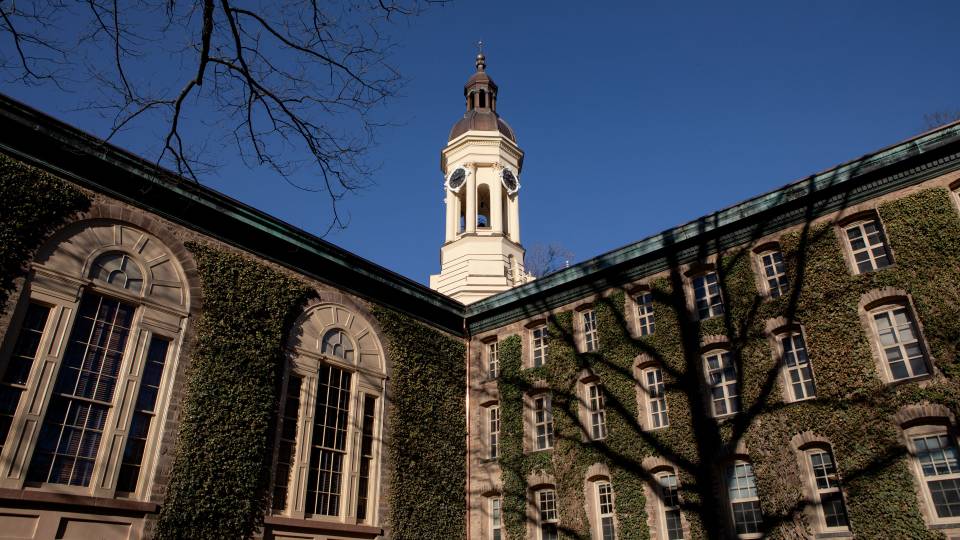The Princeton University carillon is mammoth, even by the standards of the largest family of musical instruments in the world. Carillons, a group of no fewer than 23 bells typically housed in a tower or belfry, are the great-granddaddies of all other percussives. Princeton's carillon tips the scales at 36.5 tons, has a clapper that weighs 200 pounds, and with 67 bells is the fifth largest in North America. It rings out from atop the Graduate College's Cleveland Tower, and you can hear it a mile away.
Installed in 1927, the carillon has long been part of Princeton's soundscape, played every Sunday from 1 to 1:45 p.m. and often on Wednesday afternoons as well, except during Ph.D. exam periods. During the summer, its music comes from a series of guest musicians, sitting in as part of Princeton Summer Carillon Series, now in its 22nd year. But during the academic year, University carillonneur Lisa Lonie alone sits in the "cabin" where the carillon controls are housed.
To get there, she climbs 137 spiraling stone steps, careful "to not look down." Appointed in 2012, Lonie is only the fourth University carillonneur, and she is the first woman to hold the title. "It takes some oomph" to play this instrument, she said.
There are 67 notes and five-and-a-half octaves on the instrument. The low notes are controlled by pedals, the rest with a seven-foot keyboard made up of oblong wooden mallets called batons.
The bells are "hung dead," explained Lonie, meaning they don't swing. Instead, the batons she strikes with her hands move the clappers for the mid- and high-range notes; pedals leverage the low ones. The lowest note (known as the "bourdon") on Princeton's carillon is a 12,880-pound G. Like a piano, the carillon is tuned chromatically. Unlike a piano, it only needs tuning once every century or so.
Princeton's carillon was a 35th reunion gift from the Class of 1892, inspired by a member's trip to Europe. The plan was to house it atop Holder Hall on Nassau Street, but even its original layout of 35 bells was too heavy for the space.
Since the installation in Cleveland Tower, carillon music has come and gone from campus life — played nearly every day when Princeton's instrument was new and then almost not at all in later decades (there was even a stint of piping in pre-recorded electronic carillon tunes).
Today, Lonie is trying to bring carillon music back to campus life — getting "the bells into the ears of Princeton" is how she puts it — and also into the 21st century. She invites brass players to jam with her in the cabin, takes requests via email and text, and gives free lessons on a practice console in the tower's basement every Sunday.
"Once students are proficient," she said, "we take it upstairs."
That was the experience of visiting Fulbright scholar Johannes Rothe, an astrophysicist and talented new carillonneur who never expected to learn the instrument as part of his Princeton education. "To start playing the carillon up in a tower," he said, "you have to just jump in and hope people don't mind too much."
That's also part of the appeal. Carillon players aren't seen, but they are heard.
"The carillon is a public instrument," explained Lonie. And even though its players high up in towers appear to be anything but public, feedback is not only important, it travels. Through narrow stone windows at the end of each recital, she said, "I can hear the applause."
Summer carillon concerts at the Graduate College continue on Sundays through Aug. 31, rain or shine.







